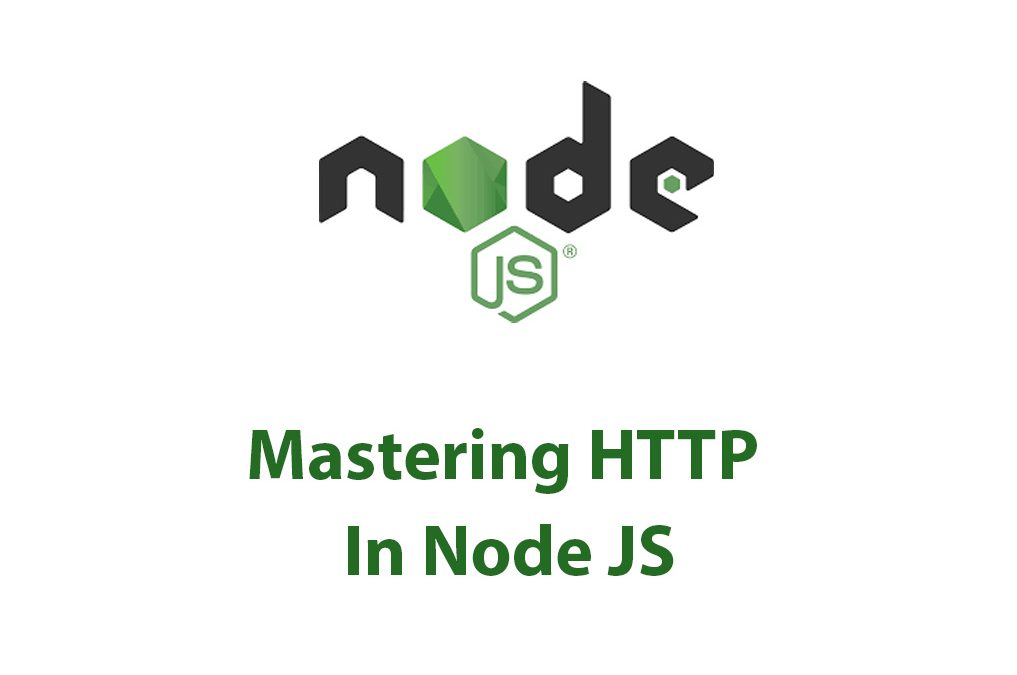Introduction
As a developer, you may have come across the term HTTP quite a few times. It stands for Hypertext Transfer Protocol and is the backbone of how the internet works. It is the protocol you use when you visit a website, send emails, and watch videos online. In the world of programming, HTTP is essential for communication between a client and a server.
In this article, I will explore how to work with HTTP in Node.js. Node.js is an open-source, cross-platform, JavaScript runtime environment used to execute JavaScript code on the server side. With Node.js, it is easier to build scalable and high-performance web applications using JavaScript, making it a popular choice among developers.
Before diving into the main topic, let’s start with the basics.
HTTP basics
HTTP is a request-response-based protocol, where a client makes a request to a server, and the server responds with the requested information. The most common request methods are GET, POST, PUT, and DELETE.
GET
The GET method is used to retrieve data from a server. For example, when you visit a webpage, your browser sends a GET request to the server, asking for the webpage’s HTML code.
POST
The POST method is used to submit data to a server. For example, when you fill out a login form and hit the submit button, your browser sends a POST request to the server with the form data.
PUT
The PUT method is used to update data on a server. For example, when you edit your profile information on a website, your browser sends a PUT request to the server, updating your information.
DELETE
The DELETE method is used to delete data from the server. For example, when you want to delete a file from a server, your browser sends a DELETE request to the server.
HTTP Status Codes
HTTP status codes are three-digit numbers returned by a server in response to a client’s request. They indicate the status of the request’s completion, whether it was successful or not. Some popular status codes are:
200: OK
201: Created
400: Bad Request
403: Forbidden
404: Not Found
500: Internal Server Error
HTTP Headers
HTTP headers are additional information sent from the client to the server or vice versa. Headers contain vital information, such as content type, encoding, and authentication.
Node.js
Node.js is a runtime environment used to execute JavaScript code on the server-side. Created by Ryan Dahl in 2009. Node.js uses the V8 engine developed by Google for its execution process. Node.js has a vast array of libraries and modules that make it effortless and straightforward to create server-side applications using JavaScript.
Installing Node.js
To get started with Node.js, you need to download and install the latest version. You can download it from the official Node.js website. Once installed, you can run the Node.js command-line interface (CLI) to execute JavaScript code on your machine.
Creating a Simple HTTP Server
To create a simple HTTP server in Node.js, you need to use the built-in ‘http’ module. Here’s an example of how to create an HTTP server using the ‘http’ module:
const http = require('http');
http.createServer((req, res) => {
res.writeHead(200, { 'Content-Type': 'text/html' });
res.end('Hello World!');
}).listen(3000);In this code, we import the ‘http’ module and use the ‘createServer’ method to create a new HTTP server. Inside the ‘createServer’ method, we define a callback function with two parameters, ‘req’ and ‘res’.
The ‘req’ parameter represents the request sent from the client to the server. It contains information about the request, such as the request method, request URL, and request headers.
The ‘res’ parameter represents the response sent from the server to the client. It contains information about the response, such as the response headers and the response data.
In this code, we use the ‘writeHead’ method to set the response status code and content type. We then use the ‘end’ method to send the response data to the client. The server is started on port 3000 using the ‘listen’ method.
To run this code, save it in a file, say “server.js,” and execute it using the Node.js CLI with the command node server.js. You can then test the server by navigating to “http://localhost:3000” in your browser.
HTTP requests and responses
To handle HTTP requests and responses in Node.js, you need to use the ‘req’ and ‘res’ objects. Here’s an example of how to handle HTTP requests and responses:
const http = require('http');
http.createServer((req, res) => {
console.log(`Received request from ${req.url}`);
res.writeHead(200, { 'Content-Type': 'text/html' });
res.write('<html><body><h1>Hello World!</h1></body></html>');
res.end();
}).listen(3000);
console.log('Server started...');In this code, we use the ‘createServer’ method to create a new HTTP server. Inside the ‘createServer’ method, we define a callback function with two parameters, ‘req’ and ‘res’.
The ‘req’ parameter represents the request sent from the client to the server. We use the ‘url’ property to log the requested URL to the console.
The ‘res’ parameter represents the response sent from the server to the client. We use the ‘writeHead’ method to set the response status code and content type. We then use the ‘write’ method to send the response data to the client, and finally, the ‘end’ method to end the response.
Handling errors and exceptions
In any application, it is essential to handle errors and exceptions. In Node.js, you can use the ‘try-catch’ block to handle errors and exceptions. Here’s an example of how to handle errors and exceptions:
const http = require('http');
http.createServer((req, res) => {
try {
// Code that may throw an error
} catch (err) {
console.error(`Error occurred: ${err}`);
res.writeHead(500, { 'Content-Type': 'text/html' });
res.write('<html><body><h1>Server Error</h1></body></html>');
res.end();
}
}).listen(3000);
console.log('Server started...');In this code, we use the ‘try-catch’ block to catch any errors that may occur within the callback function. Inside the catch block, we use the ‘console.error’ method to log the error to the console, and we set the response status code to 500 to indicate a server error. We then send an error message to the client using the ‘write’ method and end the response using the ‘end’ method.
HTTP request methods
In Node.js, you can handle HTTP request methods using the ‘req.method’ property. Here’s an example of how to handle different HTTP request methods:
const http = require('http');
http.createServer((req, res) => {
if (req.method === 'GET') {
// Handle GET requests
} else if (req.method === 'POST') {
// Handle POST requests
} else if (req.method === 'PUT') {
// Handle PUT requests
} else if (req.method === 'DELETE') {
// Handle DELETE requests
} else {
res.writeHead(405, { 'Content-Type': 'text/html' });
res.write('<html><body><h1>Method Not Allowed</h1></body></html>');
res.end();
}
}).listen(3000);
console.log('Server started...');In this code, we use conditional statements to handle different HTTP request methods. If the request method is not one of the four methods, we set the response status code to 405 to indicate a method not allowed and send an error message to the client.
HTTP headers
In Node.js, you can set HTTP headers using the ‘res.setHeader’ method. Here’s an example of how to set headers in Node.js:
const http = require('http');
http.createServer((req, res) => {
res.setHeader('Content-Type', 'text/html');
res.write('<html><body><h1>Hello World!</h1></body></html>');
res.end();
}).listen(3000);
console.log('Server started...');In this code, we use the ‘setHeader’ method to set the ‘Content-Type’ header to ‘text/html.’ We then use the ‘write’ method to send the response data to the client and end the response using the ‘end’ method.
Handling cookies in Node.js
Cookies are small pieces of information sent from the server to the client and stored on the client’s machine. In Node.js, you can handle cookies using the ‘cookie-parser’ middleware. Here’s an example of how to use the ‘cookie-parser’ middleware in Node.js:
const http = require('http');
const cookieParser = require('cookie-parser');
http.createServer((req, res) => {
// Parse cookies
const cookies = cookieParser.JSONCookies(req.cookies);
// Read a cookie
const name = cookies.name;
// Set a cookie
res.cookie('name', 'John Doe', { maxAge: 900000 });
res.writeHead(200, { 'Content-Type': 'text/html' });
res.write('<html><body><h1>Hello World!</h1></body></html>');
res.end();
}).listen(3000);
console.log('Server started...');In this code, we first import the ‘cookie-parser’ middleware. We then use the ‘JSONCookies’ method to parse the cookies sent from the client to the server. We can then read and set cookies using the ‘cookies’ object and the ‘cookie’ method, respectively.
Conclusion
In conclusion, working with HTTP in Node.js is essential for building scalable and high-performance web applications using JavaScript. In this article, we covered the basics of HTTP, explored how to create a simple HTTP server, handle HTTP requests and responses, handle errors and exceptions, handle HTTP request methods, set HTTP headers, and handle cookies in Node.js. With this knowledge, you can now build robust and efficient server-side applications that communicate with clients using the HTTP protocol.

How To Cluster In Node JS
As a developer, I’ve always been interested in exploring different ways to improve the performance of my Node JS applications. One tool that has proven to be immensely beneficial is cluster module. In this article, we’ll dive deep into clustering for Node JS, how it works, how to implement it, and the benefits it provides. […]

ECMAScript Modules in Node JS
As a software developer and avid Node JS user, I’ve always been on the lookout for ways to improve my workflow and simplify code maintenance. One of the most recent additions to Node JS that has greatly helped me achieve these goals is the implementation of ECMAScript (ES) Modules. ES Modules are a standard format […]

Mastering Buffers In Node JS
As someone who is just getting started with Node JS, hearing about buffers might be a bit confusing at first. What are they exactly, and why should you care about them? I know I was pretty perplexed by this concept when I first started working with Node JS. However, once I understood what buffers were […]

Command Line Options In Node JS
As a developer who loves working with Node JS, I’ve found myself using command line options in many of my projects. Command line options can make our Node JS programs more user-friendly and powerful. In this article, I’ll explain what command line options are, how to parse them in Node JS, how to use them […]

Using Crypto In Node JS
Have you ever wondered how some of the most secure websites and applications keep your data safe from malicious attacks? Well, one of the answers lies in the use of cryptography! Cryptography is the art of writing or solving codes and ciphers, and it has been around for centuries. In the world of computer science, […]

Working With The Net Package In Node JS
As a Node.js developer, I have always been fascinated by the vast array of modules and packages that can be used to simplify the development process. One such package that has long intrigued me is the Net package. In this article, I’ll delve deep into what the Net package is, how to set it up, […]

